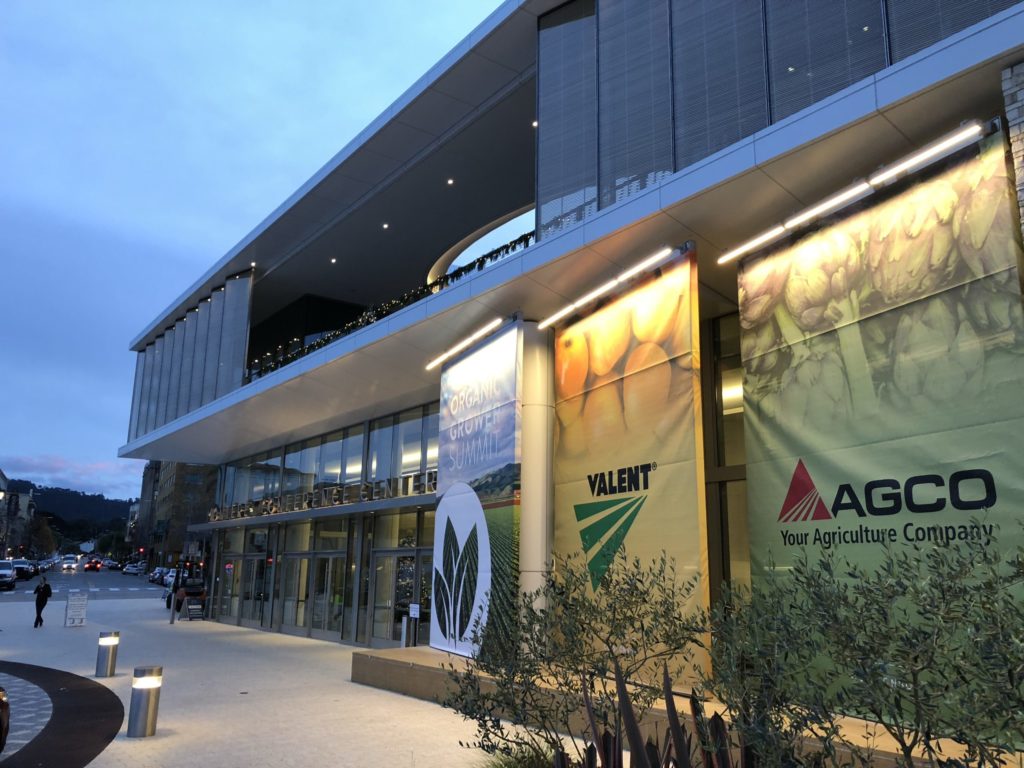
Jun 2, 2021
Dave Puglia on why Western farm operations invest in organics, food safety
Growers of the West continue to invest heavily in both organic production and food safety.
It’s not just individual growers. Membership group Western Growers recently made headlines not only for helping to present the live, in-person Organic Grower Summit, planned for Dec. 1-2 in Monterey, California, but also as being one of the first two of a campaign’s million-dollar “diamond-level” donors to the nonprofit Center for Produce Safety. (The other was Taylor Farms, which grows both organic and conventional produce.)
Founded in 1926, Western Growers represents local and regional family farmers growing fresh produce in Arizona, California, Colorado and New Mexico.
Dave Puglia, president and CEO of Western Growers, recently sat down with Organic Grower to discuss his group’s investment in food safety and organics.
Organic Grower: Western Growers is an interesting organization– your members grow about half of the U.S. vegetables and fruit? Do you have any numbers on how many of your members grow organic fruits and vegetables?
Dave Puglia: It has been a steady and fast-growing segment of the produce business, and consumer demand of course drives our members’ decisions in terms of their businesses. If consumer demand continues to call for more of our products to be offered organically, and at higher volume, we’ll respond.
OG: It often seems in informal conversations that there’s a dichotomy where it’s assumed one either believes in organic or conventional, or a grower can only do one or the other. Many growers grow both – why is that?
DP: I don’t think there’s a lot of argument in our membership about one being better than the other. In fact, there is no argument about that at all. Those are simply choices that producers and consumers will make, based on their own preferences, their own desires, and, you know, production will meet demand. Supply will meet demand.
In the agricultural community, there’s a diversity of viewpoints about different systems, but again, in the produce industry, I think in the Western U.S. – certainly it’s true in our membership and I think it’s true elsewhere – nobody is debating anything. It’s getting up in the morning and figuring out how to meet consumer demand. That’s consumer demand as expressed via our customers. Our customers, the members of Western Growers, are retail and foodservice buyers. They’re the ones who have the direct relationship with the buyers.
OG: In a news release from the Center for Produce Safety, you mentioned food safety is as big an issue as water and labor issues. In what way would you compare it to those other issues?
DP: Those are the big, challenging issues that can alter the trajectory of the produce industry in the U.S. and especially the West, and because food safety can have such a huge impact when things go wrong, I think we have an obligation to pull together to help things go right and get better. And we’ve been doing that. I think we’ve made very impressive progress.
I think that with increased expectations and transparency and increased capabilities to mitigate pathogens with technology, I think we have in some ways a more promising pathway to reducing risk of foodborne illness in the produce sector than I think we do in turning off or reducing those other challenges.
Water especially, depending on where you are, is vexing. Technology can help stretch the water supply. It can help make us more efficient – we’ve done a lot with that in the ag industry, especially in the West. But ultimately, you still have to have water. And if you continue constricting water supply to major ag-producing regions in the West, there’s only so much technology can do. Without water, you just can’t produce food.
OG: It’s interesting to me how top Western growers like Taylor Farms and JV Farms are proactive about investing in both organic farm operations and food safety research topics. Have you seen a rising interest in both among your members?
DP: They’re making smart decisions, and they’re leading to the benefit of everybody in this industry. Whether you produce organically or conventionally, the food safety challenge applies across the board. So my hat is off to Bruce Taylor and Vic Smith and many others in this industry who have opened their checkbooks to help fund food safety research through the Center for Produce Safety.

OG: Western Growers was recently announced as presenting the Organic Grower Summit in Monterey. Why invest in organic, and why should growers attend?
DP: A couple of things. We discussed the strong and consistently growing demand for organic produce. I started in this industry 15 years ago. … the share of our members producing organically was, I’m sure, in the minority, not the majority, and probably well into the minority. Fifteen years later, they’re well into the majority. I focus my attention where our members have their attention focused and organic production is a very serious driver of their business plan. Two, I had my first hands-on experience at the summit two years ago.
OG: Can you describe the last live, in-person OGS in 2019 for our readers?
DP: What I saw and experienced was a collection of people who may have some disagreement here and there about where organic production standards ought to go tomorrow, but who are all there because they want to make sure they are performing at the top of their game as organic producers today, and are prepared for whatever tomorrow may bring.









